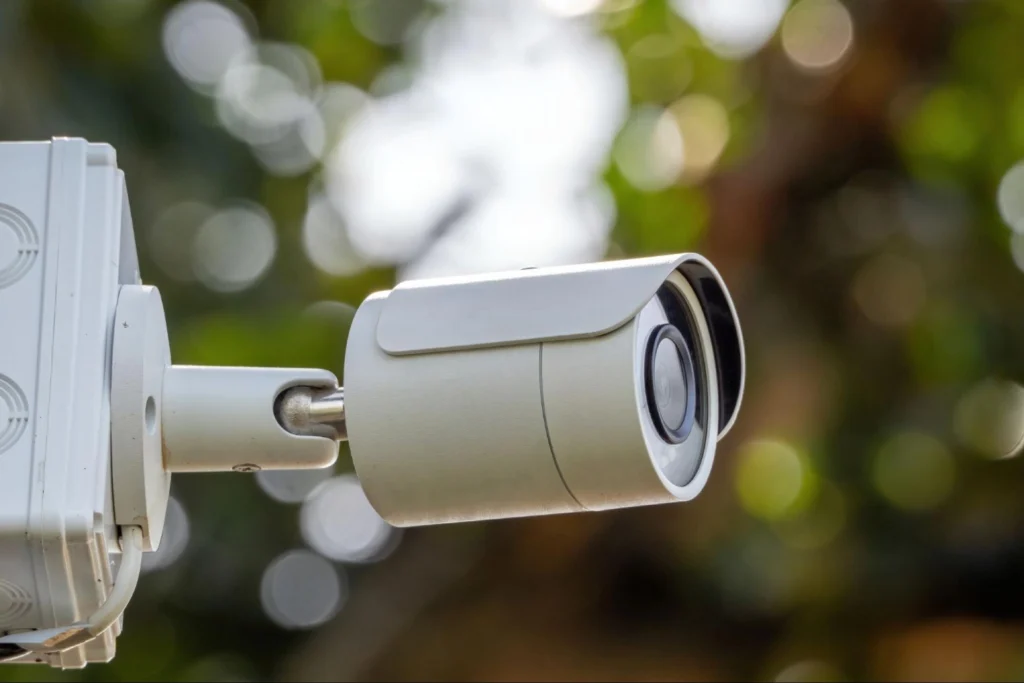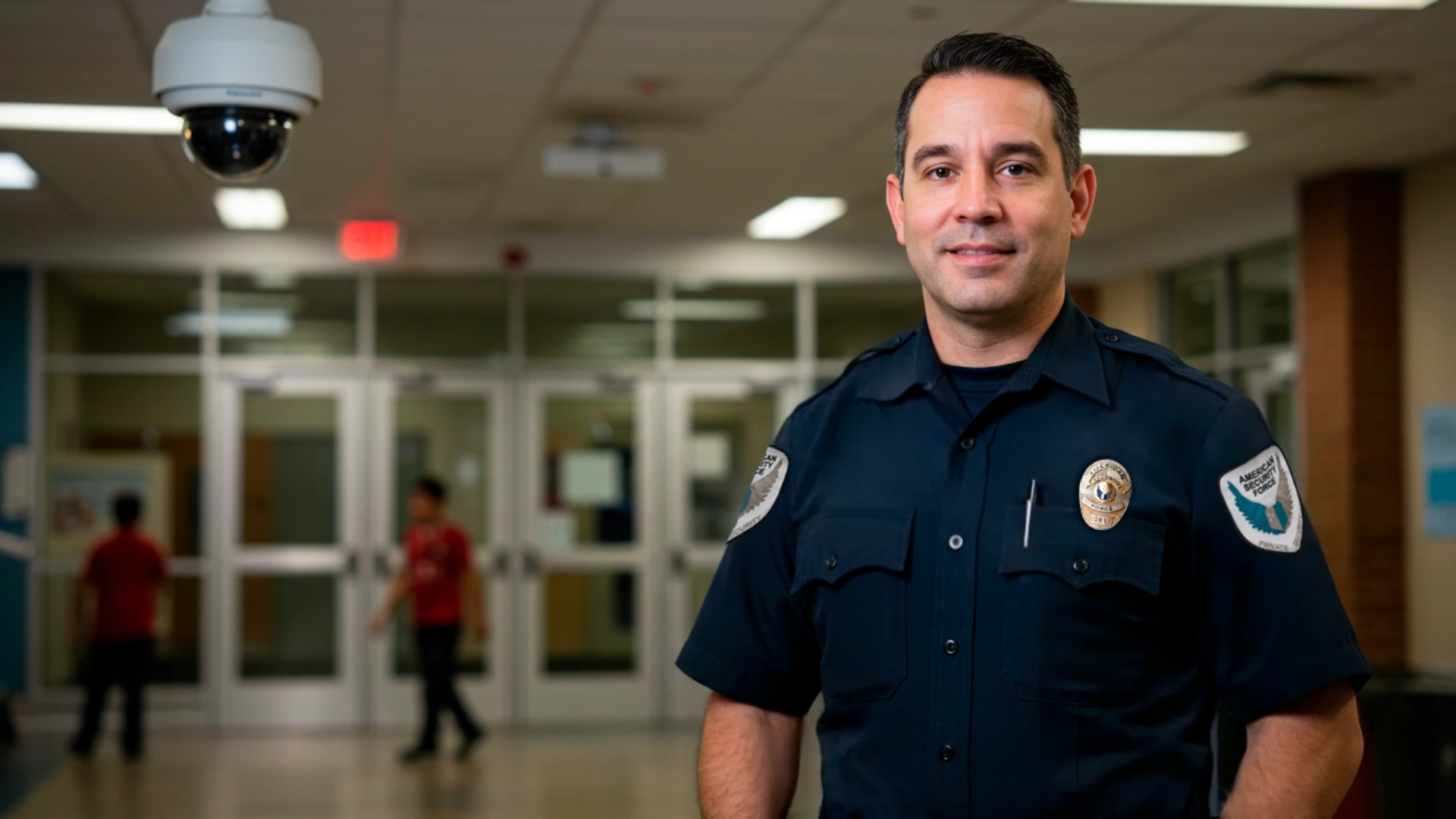When children feel emotionally and physically secure, they are likely to further engage with their schoolwork and develop stronger connections with their peers and teachers. Therefore, following effective school safety tips is essential for improving K-12 students’ performance.
With 38% of K-12 parents fearing for their child’s safety at school and increasing friction between students and teachers, investing in school safety and creating a positive environment for K-12 children is more critical than ever before.
Security threats at K-12 can come in various forms, including unauthorized entry, bullying between peers, cyberbullying, property damage, medical emergencies, and natural disasters. For schools to defend against this diverse range of threats, they must implement robust security measures and threat mitigation procedures that help to prevent and identify incidents.
Discover how to keep K-12 students safe on your premises with these essential school safety tips. As a parent, if your school is not engaging in these safety measures, it is recommended that you advocate for their implementation to ensure the well-being of your and other parents’ children.

1. Conduct Regular Threat Assessments
You can identify weaknesses and vulnerabilities throughout your school’s premises through rigorous threat assessments. A threat assessment is a systematic process that helps identify situations or individuals that pose a risk to students, teachers, staff members, or anyone else on the school’s premises. After analyzing areas for concern, schools can intervene by integrating preventative measures, allowing them to address potential safety issues before they escalate.
Threat assessments should also include testing the school’s response plan to various types of emergencies, such as acts of violence, fires, medical emergencies, and natural disasters.
Effective threat assessments should include the collaboration of school administrators, educators, law enforcement, legal professionals, mental health professionals, and parents to ensure a comprehensive analysis and response to security concerns.
2. Perform Emergency Drills
Schools are recommended to perform emergency drills once a month throughout the year. At the beginning of the academic year, your school should perform its first drill to immediately familiarize all students and staff members.
The basic emergency drills include fire, hurricanes, tornados, and earthquakes. Each situation requires a different procedure, so regularly performing each one ensures that everyone on the premises knows what action to take in any scenario.
For example, fire drills familiarize occupants with evacuation routes and procedures, while lockdown drills prepare them for potential threats within the building. Most severe weather drills teach students and staff how to seek shelter and protect themselves from harm.
Aside from demonstrating the best practices during these events, emergency drills can help to maintain calmness during real-life emergencies. When everyone on the premises is aware of what they need to do, they are less likely to panic and more likely to act swiftly, reducing the risk of injury or loss of life.
3. Give Staff Comprehensive Safety Training
All school staff members, including administrators, teachers, and custodians, should receive thorough safety training tailored to their roles and responsibilities.
This comprehensive training should include:
- Crisis management can improve each staff member’s communication and decision-making skills, enabling them to respond appropriately to emergency situations.
- Child protection training allows staff to effectively identify and report signs of neglect and physical, emotional, or sexual abuse.
- Anti-bullying enables staff to recognize signs of bullying and intervene to prevent and address such behavior.
- Conflict resolution equips staff with the skills to de-escalate situations and resolve contact in a timely manner.
- Life-saving techniques such as first aid, CPR, and AED ensure that staff can respond to medical emergencies and minimize their impact.
Training can either be completed through workshops, online modules, or on-premise sessions conducted by certified trainers. It’s advised to arrange periodic training to keep staff members updated with emerging safety concerns, procedure changes, and current best practices.
4. Install Video Surveillance Cameras
Video surveillance systems allow schools to deter crimes and anti-social activity by monitoring all areas on a school’s premises. When security cameras are in plain sight, students or outsiders will be less inclined to engage in undesirable or illegal activities, such as vandalism, theft, trespassing, and bullying, since the likelihood of them being caught and held accountable for their actions is significantly increased.
When security incidents arise, security systems provide accurate information, allowing schools and law enforcement to intervene appropriately. For instance, if a physical altercation takes place in a classroom, by recording the incident through a security camera, authorities and school administrators will not have to rely solely on witness testimonies.
Surveillance cameras can provide additional security and peace of mind by monitoring school premises outside of working hours and act as a deterrent to criminal activities by outsiders.
Top security companies in the US, such as American Security Force, install, maintain, and monitor cameras in real-time, among other surveillance services. These services allow schools to detect, deter, and respond to crimes or antisocial incidents.

5. Establish Safe Locations for Belongings
Theft is a common crime in schools that is often unnoticed due to factors such as a lack of trust in staff members and fear of judgment or retaliation. However, recent figures in the UK show that almost a quarter of students have had something stolen from them in school, with the US showing similar statistics.
Although increased supervision and surveillance can somewhat deter theft, the most effective method for protecting students’ belongings is to integrate secure locations on school premises.
Lockers and designated classroom areas with supervised access allow students to leave their possessions unattended without concern that they will be stolen. Students should also be encouraged to label their belongings, which helps identify stolen items and deter perpetrators.
For school property, inventory management procedures are recommended to promptly identify and report stolen items while promoting accountability among staff members.
6. Engage in Anti-bullying Initiatives
Bullying continues to spiral out of the control of schools and impacts students’ emotional well-being, productivity, and engagement with their work. About 15% of tweens said they had been bullied at school many times, and 14% admitted to bullying others at school at least once.
Despite these figures, most schools fail to properly implement measures to manage and prevent physical and cyberbullying. To minimize bullying and its negative short and long-term consequences, schools must adopt a proactive approach. Anti-bullying initiatives can hold bullies accountable, equip staff with the skills to respond to incidents, and foster a positive school environment.
To begin with, schools and staff members must strive to understand what causes bullying. By establishing strong relationships with students, staff can learn the cause of their behavior and work towards correcting it.
Students should also be educated about what constitutes bullying and be provided with examples of positive behavior. Understanding the various forms of bullying, such as verbal, physical, and cyberbullying, allows students to recognize, respond to, and report when necessary. Similarly, schools can encourage kindness and acceptance between peers when they highlight positive behaviors, such as empathy, respect, and inclusion.
Fortunately, there is an abundance of anti-bullying program resources created specially for schools. These resources often include educational materials, lesson outlines, and intervention strategies that are tailored to different age groups and school environments. By implementing these programs, schools can manage bullying and make their students feel safer.
7. Provide Cybersecurity Education
Cybersecurity threats continue to emerge and threaten individuals and organizations alike, including schools and their students. Poor password hygiene, misusing personal emails, and oversharing of private information on social media are the most common mistakes that contribute to cyber incidents among adults.
Without the proper education and awareness, individuals will continue to put themselves at risk online, including children, who can be more vulnerable to rapidly evolving and advanced digital threats. Therefore, cybersecurity education should be integrated into the curriculum to protect students and their sensitive information from online threats.
Through cybersecurity education, schools can teach students about safe online practices, including ignoring suspicious emails or links, creating strong passwords, and not providing their personal information to strangers. This not only safeguards students against increasingly dangerous online threats but also prepares them for their future careers, where online proficiency and cybersecurity skills will be vital.
Cybersecurity education can be provided to students in the form of online resources, training modules, talks from guest speakers, safety simulations, and specialized workshops, or it can simply be incorporated into existing subjects such as computer science.
8. Use Reporting Tools
Through integrated reporting tools, schools can monitor and respond to security incidents that would otherwise not be brought to their attention.
Particularly with incidents related to bullying, self-harm, or theft, students may, due to embarrassment, peer pressure, or fear of repercussions, choose not to disclose information to authorities or staff members. When reporting tools are available to students, they will likely be more encouraged to report incidents or raise their concerns, allowing schools to take the appropriate action. Reporting tools for students and parents can include a 24/7 telephone or text hotline that can be either anonymous or confidential.
If schools choose to adopt a hotline, they must train staff to use the tool, giving them a full understanding of the types of issues that are likely to be reported, the necessary reporting policies, and the appropriate resources to respond to caller information. It is also the school’s responsibility to ensure that its hotline program complies with federal and state privacy laws, focusing on protecting caller privacy.
Overall, hotlines are a prime example of a reporting tool that can ensure early intervention and prevention of security or safety incidents by K-12 schools.
9. Encourage Safe Transport
Security incidents can occur during students’ commute to and from school. To reduce these risks, schools can ensure safe transportation for all students through several measures.
For students who walk, schools can encourage them to follow the buddy system and walk in pairs rather than alone. Schools can also organize walking groups supervised by teachers or volunteers to provide extra safety and supervision during the commute.
For students who use public transport, schools can collaborate with local authorities to establish safe routes that are well-lit and closely monitored. As an extra precaution, schools can employ trained bus drivers and implement GPS tracking systems to monitor the buses’ whereabouts. Parents would have additional peace of mind regarding their children’s safety by also having access to the GPS tracking system, enabling them to monitor the buses’ journeys in real time.
Finally, for safe transportation, students should be educated on safety precautions when traveling, such as always wearing a seatbelt, obeying traffic rules as pedestrians, avoiding unfamiliar routes, and not accepting rides from strangers. Schools can set up workshops to encourage these safe commuting behaviors and conduct interactive sessions to teach children how to recognize and respond to potential dangers or emergencies while commuting.

10. Implement Visitor Management Systems
Schools must consider implementing robust visitor management systems to prevent unauthorized access and protect students and staff from subsequent risks. Through visitor management, schools can control and monitor anyone entering or leaving, providing a real-time overview of everyone currently on the premises.
Effective visitor management systems can include electronic access control, which can manage access to multiple locations and facilities on the school premises through a singular interface. Schools may also print visitor badges to easily identify all students, staff members, and visitors. Badges for visitors should include the individual’s name, role, destination, time of entry, and an up-to-date photo.
Other security measures that can ensure efficient visitor management include intrusion alarms, which alert the relevant authorities in the event of unauthorized entry, and security guard patrols, which navigate the entire premises, including car parks and other exterior areas. Security guards on patrols can also assist during emergency situations and make everyone on the premises feel safer overall.
11. Communicate with Parents
Schools and parents must openly communicate and collaborate when addressing safety concerns and implementing security measures. When parents are informed of what action is being taken to protect their children, they can contribute their efforts and offer new perspectives.
For example, when schools plan regular emergency drills, they are advised to inform parents as soon as the drill is scheduled. Parents can discuss the expectations and safety practices during the drills with their children to ensure they have a comprehensive understanding of how to act.
Similarly, schools should encourage parents and guardians to participate in anti-bullying initiatives to teach their children appropriate behavior and reduce the likelihood of bullying-related security incidents. Cybersecurity education can also be reinforced with the contribution of parents and guardians, who, at home, can acknowledge and reward safe behaviors learned at school.
Finally, engaging with a school’s safety measures will offer psychological reassurance to parents, as they will have insight into how the school intends to protect their children. Schools should ensure that parents have access to sufficient forms of providing feedback and ideas through online forms, suggestion boxes, and security-focused surveys.
Final Thoughts
These top school safety tips can reassure parents, protect children, and create an overall secure school environment. After assessing the premises’ critical threats, schools can establish a plan to gradually integrate the above safety measures and comprehensive K-12 school security solutions.
As new procedures are implemented, schools must be open to feedback from parents to refine their strategies to ensure K-12 students feel safe, respected, and supported.
Schools can seek the services of a reputable security company, such as American Security Force, to incorporate new safety technology like surveillance cameras, intrusion detection, and access control. Find out more about how we can protect your school’s property, students, and staff members.
K-12 School Security – FAQs
Leave no stone unturned with these answers to frequently asked K-12 school security questions:
How Often Should Schools Review and Update Their Security Plans?
Schools should review and update their security plans at least once a year. The best times are just before new academic years, as well as after any incidents or drills.
Can Security Guards Improve School Safety?
Yes, the presence alone of security guards can deter potential and opportunistic criminals, keeping students, parents, and teachers safe. Security guards can be posted at specific locations, such as entrances, exits, and reception areas, or they can patrol pre-assigned routes to check for security vulnerabilities or suspicious activity.
Can Surveillance Systems Reduce Crime in Schools?
Yes, surveillance systems such as cameras can be an affordable and effective measure to prevent crimes in K-12 schools, since perpetrators will be discouraged from taking part in any illegal activities when they know they are being recorded. Even just a single camera at the school’s entrance can make a notable difference in the prevalence of crimes on the school’s premises.
What Is the Biggest Security Threat to K-12 Schools?
In the U.S, one of the biggest security threats to K-12 schools is active shooter incidents. In 2024, there were 330 school shootings, and in 2023, there was an all-time high of 349 incidents on K-12 premises.
Security measures such as guards, access control systems, and surveillance cameras can help schools defend against active shooter events and decrease the damage these incidents have on students, teachers, and other staff members.




